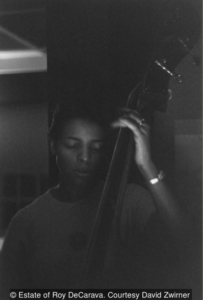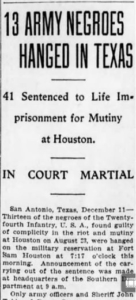How Harry S. Truman went from being a racist to desegregating the military
Photo: U.S. Air Force Staff Sgt. Edward Williams, right, shakes hands with President Harry S. Truman at a casual meeting during the president’s morning walk. (Harry S. Truman Library and Museum)
(The Washington Post) Harry S. Truman didn’t start out as a champion of African Americans. In fact, his dramatic transformation from segregationist to civil rights advocate was nothing short of astonishing.
Truman’s evolution — from a farm boy raised by Confederate sympathizers to U.S. president, who on July 26, 1948, signed the order to desegregate the armed forces — can be mapped through his letters and memoirs.
“I think one man is just as good as another so long as he’s honest and decent and not a n—– or a Chinaman,” Truman wrote in a June 22, 1911, love letter to his future wife, Bess Wallace. “Uncle Will says that the Lord made a white man from dust, a n—– from mud, and then threw what was left and it came down a Chinaman. He does hate Chinese and Japs. So do I. It is race prejudice I guess. But I am strongly of the opinion that negroes ought to be in Africa, yellow men in Asia, and white men in Europe and America.” (more)
Biography of William Still, Father of the Underground Railroad
 (ThoughtCo.) William Still (October 7, 1821–July 14, 1902) was a prominent abolitionist who coined the term Underground Railroad and, as one of the chief “conductors” in Pennsylvania helped thousands of people get free and settled away from slavery. Throughout his life, Still fought not only to abolish slavery, but also to provide African-Americans in northern enclaves with civil rights. Still’s work with runaways is documented in his seminal text, “The Underground Rail Road.” Still believed that the book could “encourage the race in efforts of self-elevation.”
(ThoughtCo.) William Still (October 7, 1821–July 14, 1902) was a prominent abolitionist who coined the term Underground Railroad and, as one of the chief “conductors” in Pennsylvania helped thousands of people get free and settled away from slavery. Throughout his life, Still fought not only to abolish slavery, but also to provide African-Americans in northern enclaves with civil rights. Still’s work with runaways is documented in his seminal text, “The Underground Rail Road.” Still believed that the book could “encourage the race in efforts of self-elevation.”
Still was born a free black man in near the town of Medford, in Burlington County, New Jersey, the youngest of 18 children born to Levin and Sidney Steel. Although he gave his official birthdate as October 7, 1821, Still provided the date of November 1819 on the 1900 census. Still was the son of people who had been enslaved laborers on a potato and corn farm on the eastern shore of Maryland owned by Saunders Griffin. (more)
Roy DeCarava’s stunning photos of jazz greats
A pair of exhibitions highlight the work of neglected African-American photographer Roy DeCarava and his mysterious and captivating photos of black America.
(BBC) If you haven’t come across DeCarava’s name, you’re hardly alone. The subject of a double exhibition currently occupying the gallerist David Zwirner’s two spaces in New York, his reputation is almost as shadowy as his pictures. Despite being one of the leading African-American artists of his generation – the first black photographer ever to win a prestigious Guggenheim Fellowship in 1952 – DeCarava is a neglected figure. His books spent years out of print and his pictures have rarely been exhibited, particularly on their own. This New York exhibition is the first time they have been seen in any quantity for more than 20 years.
“We felt it was long since time,” his widow, Sherry Turner DeCarava, who has curated the show, tells BBC Culture. Her only sadness, she adds, is that her husband isn’t here to enjoy it: he died in 2009. (more)
TIPHC Bookshelf
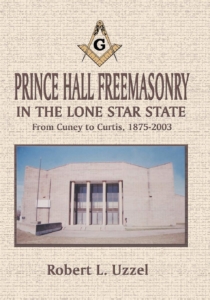 Published scholarship on black history in Texas is growing and we’d like to share with you some suggested readings, both current and past, from some of the preeminent history scholars in Texas and beyond. We invite you to take a look at our bookshelf page – including a featured selection – and check back as the list grows. A different selection will be featured each week. We welcome suggestions and reviews. This week, we offer, “Prince Hall Freemasonry in the Lone Star State,” by Robert L. Uzzel.
Published scholarship on black history in Texas is growing and we’d like to share with you some suggested readings, both current and past, from some of the preeminent history scholars in Texas and beyond. We invite you to take a look at our bookshelf page – including a featured selection – and check back as the list grows. A different selection will be featured each week. We welcome suggestions and reviews. This week, we offer, “Prince Hall Freemasonry in the Lone Star State,” by Robert L. Uzzel.
Freemasonry is one of the world s oldest fraternal organizations. It is a society of men concerned with moral and spiritual values. Members are taught its precepts by a series of ritual dramas that follow ancient forms and employ the symbolism of stonemasonry. Assuming its present form in England during the 18th century, Freemasonry came to America with the colonists, and Freemasons have played many roles in American history.
When the author first inquired about the admission of African Americans to Masonic lodges, he was told: They have their own lodges. He later learned that white Masons viewed black Masons not as separate but equal but as irregular and clandestine. Nevertheless, he also learned that members of the predominantly black Prince Hall Masonic Grand Lodges have held their heads high and practiced the ancient mysteries for over two hundred years.
There is now light at the end of the tunnel. Since 1989, thirty-seven mainstream (white) Grand Lodges have extended fraternal recognition to their Prince Hall counterparts. It is our hope that we will eventually see the end of the contradiction of a color line in an organization dedicated to the Fatherhood of God and the Brotherhood of Man.
This Week in Texas Black History
Dec. 9
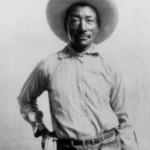 Taylor native Bill Pickett became the first African-American elected to the Rodeo Cowboy Hall of Fame on this day in 1971. Pickett is noted as the originator of “steer wresting” with his technique of “bulldogging” steers, during which Pickett would subdue unruly cows by jumping from his horse to the cow, wrestling him to the ground, then biting the creature’s lip. Pickett said he got the idea from watching dogs do the same thing when they were herding cows. Known as the “Dusky Demon,” Pickett has also been honored by the U.S. Postal Service as part of its “Legends of the West” series of commemorative stamps.
Taylor native Bill Pickett became the first African-American elected to the Rodeo Cowboy Hall of Fame on this day in 1971. Pickett is noted as the originator of “steer wresting” with his technique of “bulldogging” steers, during which Pickett would subdue unruly cows by jumping from his horse to the cow, wrestling him to the ground, then biting the creature’s lip. Pickett said he got the idea from watching dogs do the same thing when they were herding cows. Known as the “Dusky Demon,” Pickett has also been honored by the U.S. Postal Service as part of its “Legends of the West” series of commemorative stamps.
Dec. 9
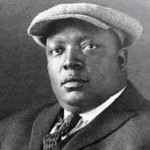 On this day in 1930, Calvert native Rube Foster, founder of baseball’s first successful all-black league, the Negro National League, died in Kankakee, Illinois. Known as the “Father of Black Baseball,” Foster was a star pitcher and manager for the Chicago American Giants, as well as league commissioner. The NNL, headquartered in Kansas City, Mo., had teams in the South and Midwest including Texas teams such as the Austin Black Senators, Fort Worth Black Panthers, and the Houston Eagles. Foster was elected to the Baseball Hall of Fame in 1981.
On this day in 1930, Calvert native Rube Foster, founder of baseball’s first successful all-black league, the Negro National League, died in Kankakee, Illinois. Known as the “Father of Black Baseball,” Foster was a star pitcher and manager for the Chicago American Giants, as well as league commissioner. The NNL, headquartered in Kansas City, Mo., had teams in the South and Midwest including Texas teams such as the Austin Black Senators, Fort Worth Black Panthers, and the Houston Eagles. Foster was elected to the Baseball Hall of Fame in 1981.
Dec. 10
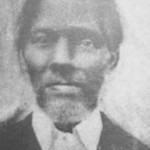 This day marks the passing of Rev. Jacob Fontaine in 1898. Born in Arkansas, Fontaine was a Baptist minister, publisher, and community leader who came to Austin in 1839 with his owner, Rev. Edward Fontaine, who served as personal secretary for Texas president Mirabeau B. Lamar. In 1867, Jacob Fontaine founded the First Baptist Church (Colored) on the same property where the Austin History Center now sits. In 1876, he established the Gold Dollar, one of the first black weekly newspapers in the South and the first newspaper under black ownership in Austin. He also participated in the founding of five African-American churches as well as the St. John Regular Missionary Baptist Association.
This day marks the passing of Rev. Jacob Fontaine in 1898. Born in Arkansas, Fontaine was a Baptist minister, publisher, and community leader who came to Austin in 1839 with his owner, Rev. Edward Fontaine, who served as personal secretary for Texas president Mirabeau B. Lamar. In 1867, Jacob Fontaine founded the First Baptist Church (Colored) on the same property where the Austin History Center now sits. In 1876, he established the Gold Dollar, one of the first black weekly newspapers in the South and the first newspaper under black ownership in Austin. He also participated in the founding of five African-American churches as well as the St. John Regular Missionary Baptist Association.
Dec. 10
 On this day in 2011, Kevin Sumlin became the first black head football coach at Texas A&M University. In his first year as the Aggies’ head coach, Sumlin led A&M to a No. 5 national ranking and the program’s first 11-win season since 1998. Sumlin was a national coach of the year finalist and coached the first-ever freshman to win the Heisman Trophy – quarterback Johnny Manziel. Sumlin went to Texas A&M after leading the University of Houston Cougars to a school-record 13 victories and the program’s highest finish (No. 20) in the Bowl Championship Series standings in 2011. Sumlin posted a 35-17 overall record and led the Cougars to three bowl games fueled by his high-powered offense that led the nation in passing, total and scoring offense that set NCAA FBS team records for total offense and passing yards. When hired at UH in 2008, Sumlin became the first African-American head football coach at a NCAA Division I school in the state of Texas. Sumlin was born in Brewton, Alabama, however graduated high school in Indianapolis and attended Purdue University, graduating in 1988 with a bachelor’s degree in both criminology and criminal justice. He was a standout linebacker for the Boilermakers.
On this day in 2011, Kevin Sumlin became the first black head football coach at Texas A&M University. In his first year as the Aggies’ head coach, Sumlin led A&M to a No. 5 national ranking and the program’s first 11-win season since 1998. Sumlin was a national coach of the year finalist and coached the first-ever freshman to win the Heisman Trophy – quarterback Johnny Manziel. Sumlin went to Texas A&M after leading the University of Houston Cougars to a school-record 13 victories and the program’s highest finish (No. 20) in the Bowl Championship Series standings in 2011. Sumlin posted a 35-17 overall record and led the Cougars to three bowl games fueled by his high-powered offense that led the nation in passing, total and scoring offense that set NCAA FBS team records for total offense and passing yards. When hired at UH in 2008, Sumlin became the first African-American head football coach at a NCAA Division I school in the state of Texas. Sumlin was born in Brewton, Alabama, however graduated high school in Indianapolis and attended Purdue University, graduating in 1988 with a bachelor’s degree in both criminology and criminal justice. He was a standout linebacker for the Boilermakers.
Dec. 11
On this day in 1917, thirteen black soldiers were hanged as a result of the Houston Riots, also called the Camp Logan Mutiny. The men, members of the 3rd Battalion of the 24th Infantry (Buffalo Soldiers), were condemned to death after the largest court-martial in US military history, with 64 soldiers on trial at Fort Sam Houston in San Antonio. There was no clear evidence that any of the men had participated in the two-hour incident on Aug. 23 of that year in which 16 white civilians were killed and four soldiers died. Racial abuse of the soldiers from white policemen and civilians led to the incident.
Dec. 11
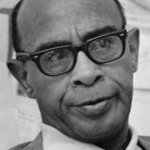 On this day in 1912, Heman Marion Sweatt was born in Houston. In 1946, Sweatt, a graduate of Wiley College, challenged the admissions policy at the University of Texas law school. He teamed with the NAACP, which was looking to test separate but equal education statutes in Texas. Sweatt’s legal battle struck down segregationist policies at the UT law school, gained him admission, and paved the way for the landmark decision of Brown v. Board of Education in 1954.
On this day in 1912, Heman Marion Sweatt was born in Houston. In 1946, Sweatt, a graduate of Wiley College, challenged the admissions policy at the University of Texas law school. He teamed with the NAACP, which was looking to test separate but equal education statutes in Texas. Sweatt’s legal battle struck down segregationist policies at the UT law school, gained him admission, and paved the way for the landmark decision of Brown v. Board of Education in 1954.
Dec. 11
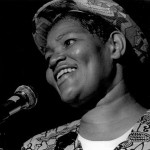 Texas blues pioneer Willie Mae “Big Mama” Thornton was born on this day in 1926 in Montgomery, Alabama. Thornton left home in 1941 to pursue her musical career, eventually settling in Houston in 1948. Her 1952 recording of “Hound Dog” was later a huge hit for Elvis Presley, and her song “Ball and Chain” was made famous by Janis Joplin.
Texas blues pioneer Willie Mae “Big Mama” Thornton was born on this day in 1926 in Montgomery, Alabama. Thornton left home in 1941 to pursue her musical career, eventually settling in Houston in 1948. Her 1952 recording of “Hound Dog” was later a huge hit for Elvis Presley, and her song “Ball and Chain” was made famous by Janis Joplin.
Dec. 12
The Ashworth Act was passed by the Texas Congress on this day in 1840 in response to an act passed on February 5, 1840 which prohibited free blacks from living in the Republic of Texas. The Ashworth Act was targeted towards certain free blacks (primarily a family of blacks named Ashworth who had “contributed generously” during the Texas Revolution), but generally said that “all free persons of color together with their families, who were residing in Texas the day of the state’s Declaration of Independence” (March 2, 1836) could remain in the state. Other free blacks had two years to vacate Texas or be sold into slavery.
Dec. 13
 On this day in 1967, actor and comedian Eric Marlon Bishop was born in Terrell. In 1989, Bishop changed his name to Jamie Foxx in an effort to get more performance time as a stand-up comic at a Los Angeles club. As an actor, he became the first African American to receive two acting Oscar nominations in the same year (2004) for two different movies, Collateral and Ray.
On this day in 1967, actor and comedian Eric Marlon Bishop was born in Terrell. In 1989, Bishop changed his name to Jamie Foxx in an effort to get more performance time as a stand-up comic at a Los Angeles club. As an actor, he became the first African American to receive two acting Oscar nominations in the same year (2004) for two different movies, Collateral and Ray.
Dec. 14
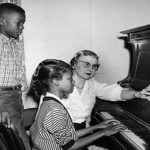 On this day in 1978, Iola Bowden Chambers, co-founder and director of the Negro Fine Arts School in Georgetown, died in Brownwood. Bowden was a native of Holder and received a diploma in piano in 1926 from the Washington Conservatory of Music. She returned to Texas and taught music at Southwestern University where she and three of her students began teaching piano to black children in Georgetown as the Negro Fine Arts School. The program was sponsored by the Student Christian Association at Southwestern University and classes were held at the First Methodist Church of Georgetown. Over 200 students participated in the school during its existence from 1946 to 1966. The program held an annual recital but also awarded college scholarships. One former teacher said the basic impact of the organization was “the realization of the power of music as a universal language to transcend racial and cultural barriers.”
On this day in 1978, Iola Bowden Chambers, co-founder and director of the Negro Fine Arts School in Georgetown, died in Brownwood. Bowden was a native of Holder and received a diploma in piano in 1926 from the Washington Conservatory of Music. She returned to Texas and taught music at Southwestern University where she and three of her students began teaching piano to black children in Georgetown as the Negro Fine Arts School. The program was sponsored by the Student Christian Association at Southwestern University and classes were held at the First Methodist Church of Georgetown. Over 200 students participated in the school during its existence from 1946 to 1966. The program held an annual recital but also awarded college scholarships. One former teacher said the basic impact of the organization was “the realization of the power of music as a universal language to transcend racial and cultural barriers.”
Blog: Ron Goodwin, Ph.D., author, PVAMU history professor
 Ron Goodwin is an assistant professor of history at Prairie View A&M University. Even though he was a military “brat,” he still considers San Antonio home. Like his father and brother, Ron joined the U.S. Air Force and while enlisted received his undergraduate degree from Texas Lutheran University in Seguin, Texas. After his honorable discharge, he completed graduate degrees from Texas Southern University. Goodwin’s book, Blacks in Houston, is a pictorial history of Houston’s black community. His most recent book, Remembering the Days of Sorrow, examines the institution of slavery in Texas from the perspective of the New Deal’s Slave Narratives.
Ron Goodwin is an assistant professor of history at Prairie View A&M University. Even though he was a military “brat,” he still considers San Antonio home. Like his father and brother, Ron joined the U.S. Air Force and while enlisted received his undergraduate degree from Texas Lutheran University in Seguin, Texas. After his honorable discharge, he completed graduate degrees from Texas Southern University. Goodwin’s book, Blacks in Houston, is a pictorial history of Houston’s black community. His most recent book, Remembering the Days of Sorrow, examines the institution of slavery in Texas from the perspective of the New Deal’s Slave Narratives.
Recent Posts
Contact sport
I live in a small municipality about twenty miles from downtown Houston that was once considered a suburban community. Today, that identifier of “suburb” no longer applies given the development of cities 30-40 miles from Houston. My little hamlet is land-locked and no longer the quaint community it once was. The city is still very livable and a desirable location for raising a family. However, the ills that affect a major city are beginning to…(more)
Worried?
I have a confession. I’m a worrier. But I don’t worry if the Dallas Cowboys or the Houston Texans will make the playoffs, I worry about my family’s health and well being. Right now I’m especially worried about my mother and one of my brothers-in-law. Both are dealing with issues that I pray daily about. And I know I’m not supposed to worry, the Good Book teaches that if the Provider takes care of the…(more)
Submissions wanted
Historians, scholars, students, lend us your…writings. Help us produce the most comprehensive documentation ever undertaken for the African American experience in Texas. We encourage you to contribute items about people, places, events, issues, politics/legislation, sports, entertainment, religion, etc., as general entries or essays. Our documentation is wide-ranging and diverse, and you may research and write about the subject of your interest or, to start, please consult our list of suggested biographical entries and see submission guidelines. However, all topics must be approved by TIPHC editors before beginning your research/writing.
We welcome your questions or comments. Please contact Michael Hurd, Director of TIPHC, at mdhurd@pvamu.edu.

